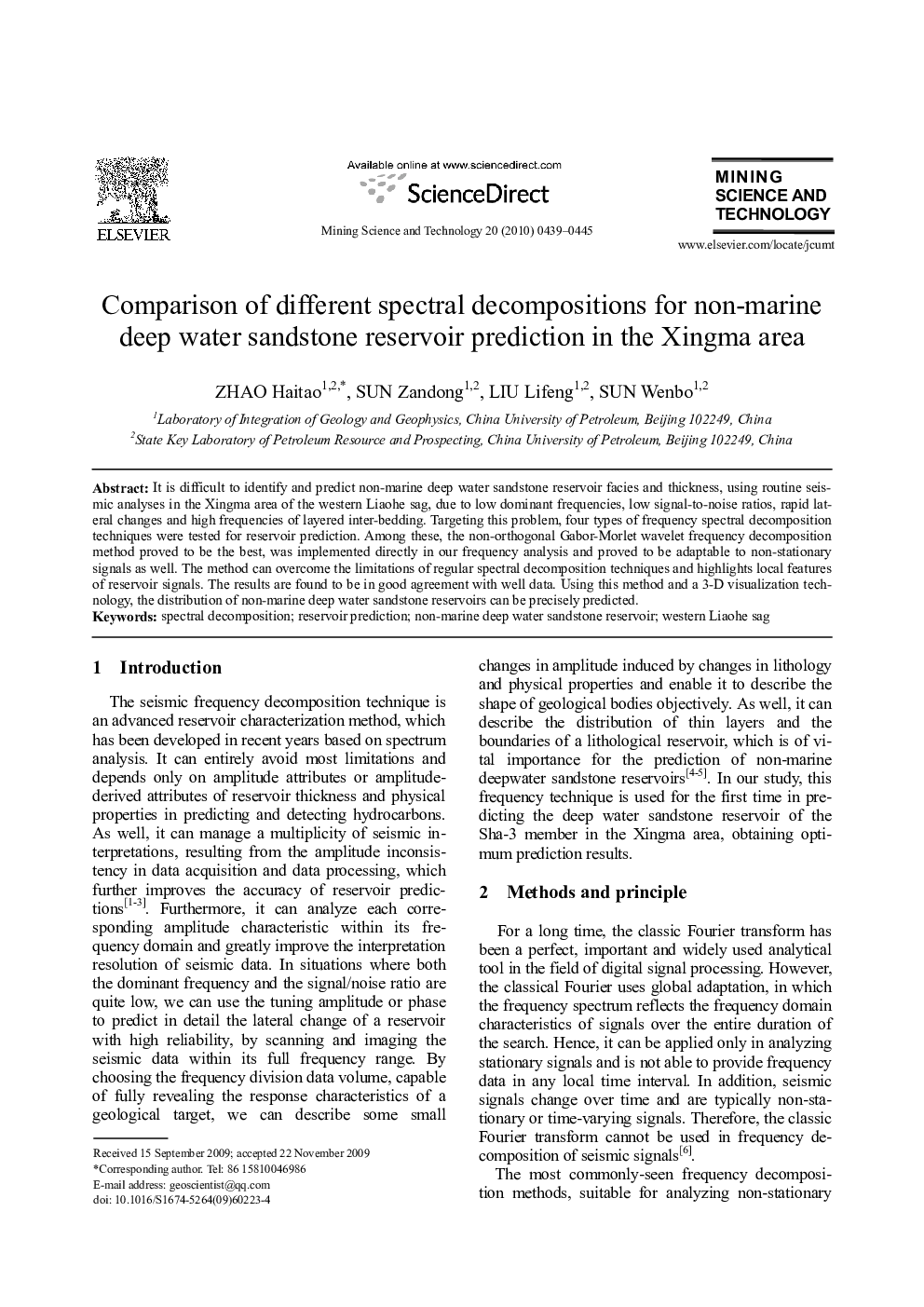| Article ID | Journal | Published Year | Pages | File Type |
|---|---|---|---|---|
| 294650 | Mining Science and Technology (China) | 2010 | 7 Pages |
It is difficult to identify and predict non-marine deep water sandstone reservoir facies and thickness, using routine seismic analyses in the Xingma area of the western Liaohe sag, due to low dominant frequencies, low signal-to-noise ratios, rapid lateral changes and high frequencies of layered inter-bedding. Targeting this problem, four types of frequency spectral decomposition techniques were tested for reservoir prediction. Among these, the non-orthogonal Gabor-Morlet wavelet frequency decomposition method proved to be the best, was implemented directly in our frequency analysis[zht1] and proved to be adaptable to non-stationary signals as well. The method can overcome the limitations of regular spectral decomposition techniques and highlights local features of reservoir signals. The results are found to be in good agreement with well data. Using this method and a 3-D visualization technology, the distribution of non-marine deep water sandstone reservoirs can be precisely predicted.
